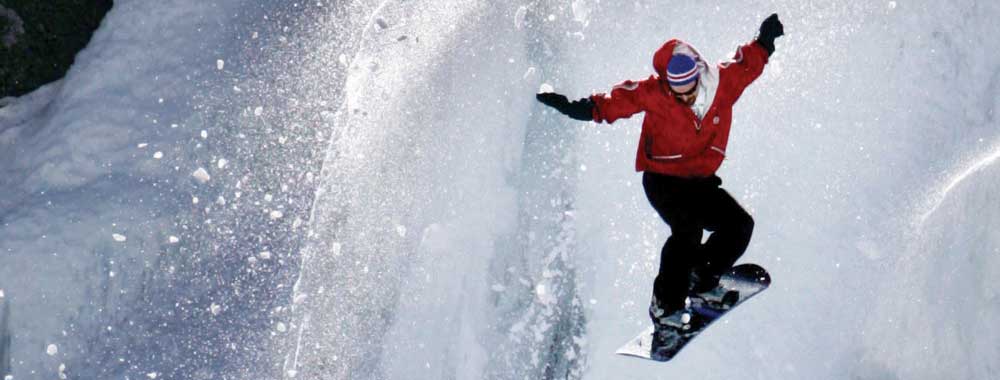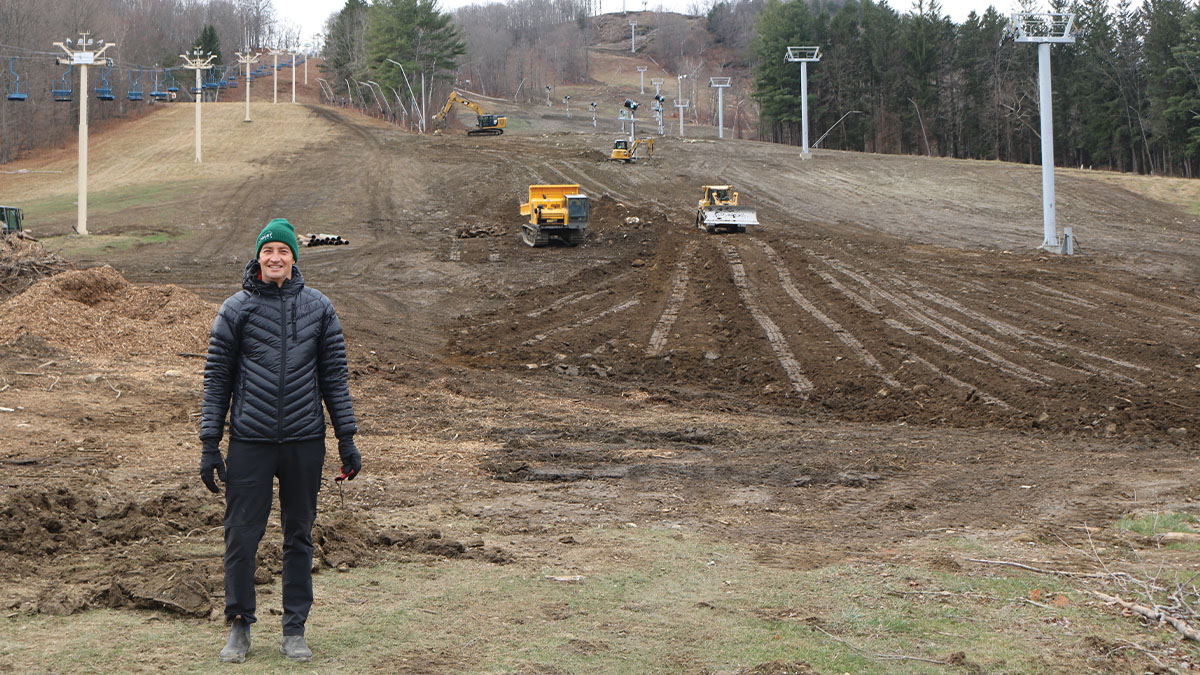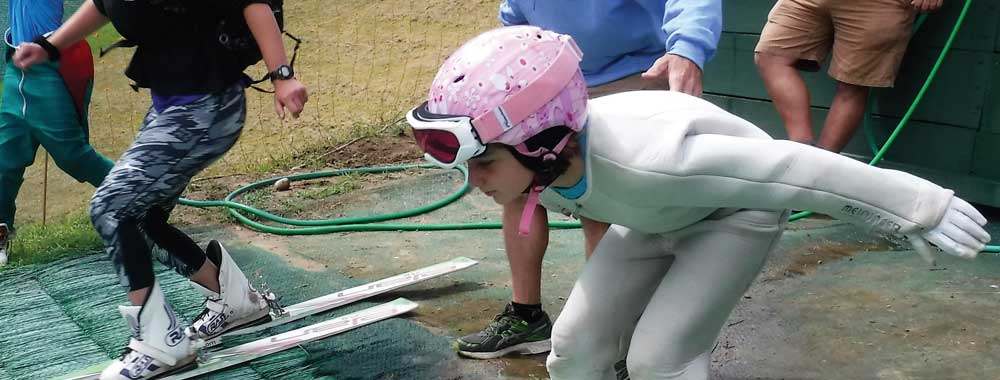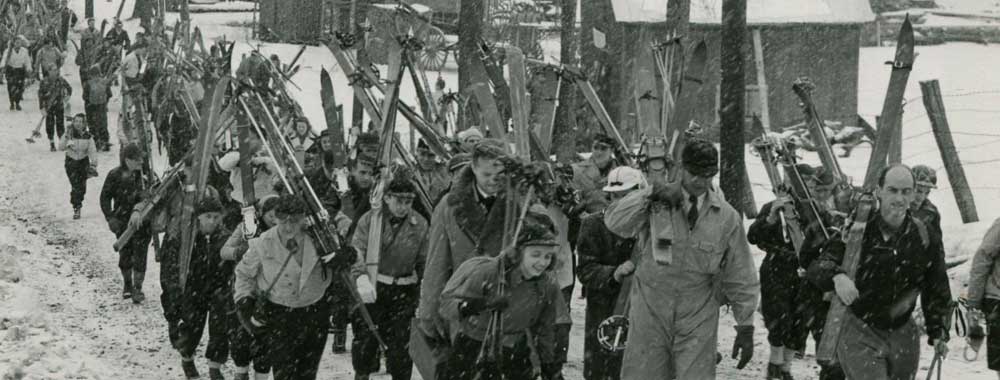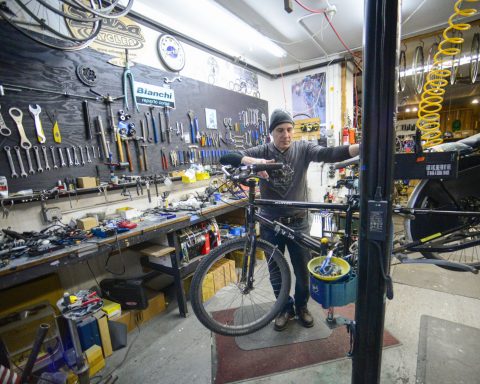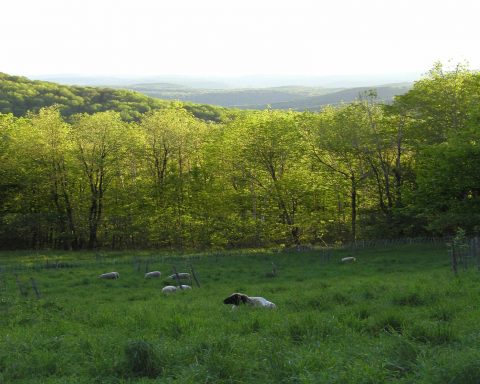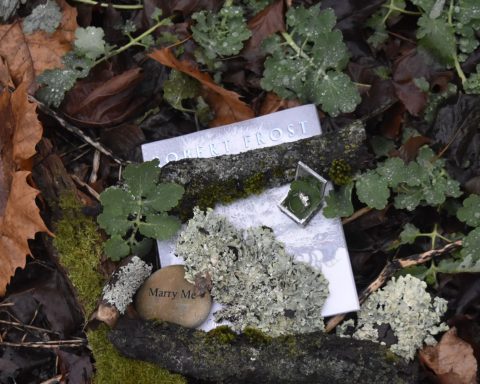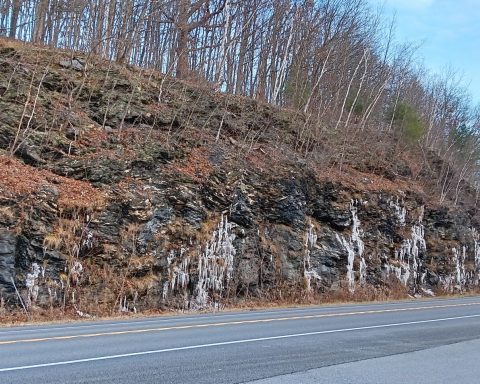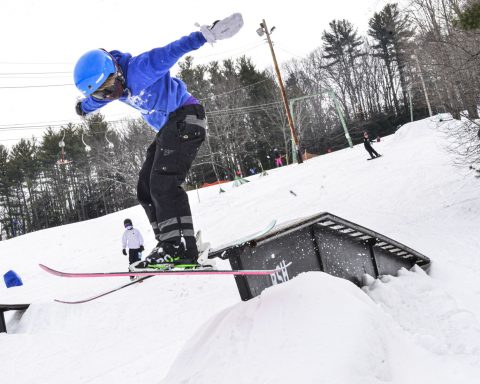These backcountry ski slopes are not for the faint of heart

By Mike Walsh
Trading in the noisy carving of hard-pack cords to dip your twin tips into some soft, succulent powder is an experience that can be lost on skiers and riders in the Northeast.
New England is home to some of the best ski resorts in the world, and you can cut up freshly-groomed terrain until the sun sets over the Berkshire mountains.
But, that type of shredding comes at a steep lift-ticket price, and as Josh Chittenden of Berkshire Outfitters outdoor shop in Adams, Mass., puts it, “you’re at the mercy of the power.”
Chittenden is a backcountry skiing veteran who took a break from fitting a pair of skis with new bindings to chat about the beauty of alpine touring, or what the French might call randonee.
“I think in the last 10 to 15 years, backcountry skiing has grown in leaps and bounds with the innovation of lighter equipment,” he said. “It’s grown because ski areas aren’t getting any cheaper and you’re at the mercy of the power, the electricity. Accessibility to backcountry areas is growing like wildfire.”
So, when bargain-hunting first-tracks junkies need to get a free fix, it’s time to skin up and hit the backcountry.
Not for the novice downhillers out there, tackling the backcountry takes a different level of winter sportsman. But skiing sans Liftopia is something attainable for all.
“If someone is just getting themselves into backcountry skiing, you need to have good skills at the resort,” Chittenden said. “Then, you need to be able to handle different snow conditions. We all take corduroy for granted.”
The backcountry shouldn’t be taken lightly, and one needs the proper equipment, with everything from skis, skins, snowshoes and boots to smartly-layered clothing, food and energy supplements.
For those testing the untamed wild of backcountry skiing, a spot like Mad River Glen can offer a nice entry point.
Mad River Glen

Located in Waitsfield, Vt., the intimidating-sounding Mad River Glen is kicking off its 70th anniversary with its earliest-ever opening.
Despite being our starting point, the Glen is no joke. It boasts 2,000 feet of vertical drop and warns prospective powder hounds right out of the gates to “ski it if you can.”
Chittenden describes the Glen as a spot with tons of great glade skiing that can connect you with the sport’s roots. They have very primitive and minimal snowmaking and grooming and an old-school lodge that brings you right back to the old days. There even is the draw of one of only two single chairlifts in the country. For the stodgier skiers, there has even been a ban on snowboarders clogging up Mad River since 1992.
“Mad River can really help you get ready for bigger adventures,” Chittenden said. “They have plenty of hair-raising runs, but they also have ski patrol right there with snowmobiles. They have access to help you.”
Former Bennington Banner sports editor Adam White wrote a piece titled “Descent into Madness,” which details his first experience with General Stark Mountain.
“Nowhere else can go you go from having your butt in a chair to your heart in your throat so quickly. So if just finishing a run isn’t enough for you, and you need to reach the bottom with the feeling that you’ve survived something,” White finishes. “I suggest you give Mad River Glen a shot. If you can.”
Dutch Hill

Hop on 91 south for a couple of hours and you can take in the beautiful marriage of human ingenuity and Mother Nature at Dutch Hill in Readsboro, Vt.
The elder among you will recall trips to this beacon of the Green Mountains for family ski outings, along some of the toughest terrain New England had to offer.
“I started my skiing career on Dutch Hill. Every weekend my family of seven would pack into the station wagon to take on the Hill,” writes reader Glenn Houle. “Great snow, great people and great memories. The Windmill and Christie were two of the most challenging slopes I have ever skied.”
Fellow Dutch alumnus Gary Schiff agrees.
“The final stretch of the liftline before reaching the summit was often littered with those who fell off the T-bar. This was a particular problem, as the only way down was via the two steepest trails on the mountain — the Windmill or the Christiana — which flanked the T-bar lifeline.”
The ski area, unfortunately, went belly-up in the mid-1980s, after about 40 years in the snow biz.
The mountain was returned to Mother Nature fully by the turn of the century.
Recently, though, efforts have been made to reestablish Dutch Hill, not as a family resort, but as a backcountry haven in Southern Vermont.
The Dutch Hill Alliance of Skiers and Hikers (DHASH) has spent the past two years cutting out the old ski runs and new glades, with the help of the U.S. Forest Service, which designated the land for nonmotorized winter recreation, according to a report in VT Ski and Ride. It’s first season under the stewardship of DHASH brought folks from all over New England and New York.
Dutch Hill delivers just 600 vertical feet, but there is still an outrageous amount of fun to be had with a true return to nature.
Hogback Mountain

Dutch Hill is following the lead of neighboring Hogback Mountain, just a short scoot west on Route 9.
The Hogback Mountain Conservation Association literally and figuratively forged new paths by taking over the former ski resort and creating a constantly evolving backcountry paradise.
Hogback also succumbed to the elements in the mid-1980s, and for about 30 years let nature run her course. Then, the HMCA bought the land in 2006, and plans were set in motion to start cutting some new paths through the growth.
Since 2013, the association has superbly worked a give-and-go with the local ecosystem, cutting backcountry ski trails one by one every two years. The most recent work session was in October, on the Practice Slope, which will join the Great White Way and the 3,000-foot Meadow Trail this season. The land is now owned by the town of Marlboro, Vt.
Hogback and Dutch feature some of the heaviest snowfall in the Northeast and don’t need quite as much time to fill in as the better-known Thunderbolt.
Thunderbolt Ski Trail

Perhaps the best-known and most-trafficked backcountry spot in New England is right in the Berkshires’ backyard.
According to Chittenden, who lives five minutes from the base, you can find as many as 70 people earning their turns on the Thunderbolt during late-winter weekends. Some camp out overnight hoping for first tracks, only to be spoiled by the locals’ home-field advantage.
The key here is late winter. The ’Bolt takes some serious time and snowfall to firm up a base that protects the mountain and the skier from serious damage.
Keep tabs on the Thunderbolt Ski Runners’ Facebook page for constant updates on the conditions. When in doubt, Berkshire Outfitters, in Adams, Mass., is a phone call away for the expertise to keep you and Mount Greylock safe.
“We’re trying to educate the backcountry user on ski etiquette and stewardship,” said Chittenden, a member of the Thunderbolt Ski Runners. “Trying to educate people to use Bellow’s Pipe as the up-traffic and discourage post-holing and skiing up the Thunderbolt itself.”
There have been big erosion problems, and the Ski Runners are in talks with the Massachusetts Department of Conservation and Recreation to better educate the foot traffic.
When it’s right, though, the Thunderbolt is peak backcountry skiing. Over 2,500 vertical feet take you down 2.1 miles of spectacular panoramic views.
In a Powder Report column last season in The Berkshire Eagle, TSR’s Blair Mahar gave his expert take on how finicky the ’Bolt can be weather-wise, and some advice on tackling it.
“You have to realize that getting up is only half the battle. You’ve got to leave enough fuel in the tank to get back down the mountain,” Mahar said at the time. “You can fry your legs and lungs on the way up … If your legs are spent, you’re going to have a wobbly run down the mountain.”
There’s an outrageous amount of Thunderbolt information and stories out there. But, until backcountry ballers get the go-ahead, take a breather and as Schiff recommends, “Be sure to watch “Purple Mountain Majesty,” a great documentary on the trail.
That, or find a good podcast, get in the car and head back up Interstate 91 for four hours and keep an eye on the Mount Washington Avalanche Center in New Hampshire.
Tuckerman Ravine
If you’ve got your alpine touring legs firmly beneath you, you might be ready for the true backcountry pilgrimage to Tuckerman Ravine.
Unlike the Thunderbolt, skiers and riders are already tasting some powder on the left and central gully trails alongside Mount Washington’s monster.
As Chittenden puts it, Tuckerman’s has the “biggest consequences.”
He describes the steep headwall like climbing a ladder on the way up, and the way down features a lot of rocky outcrops.
“The climb up the headwall — one step at a time, avoiding crevasses, digging in so as not to lose footing and go into a slide,” wrote Schiff, a two-time Tuckerman veteran. “If this happens, you cannot stop and will wind up at the bottom among large and dangerous rocks.”
While the blooper-reel wipeouts can make for entertaining or cringe-worthy watching, the danger of Tuckerman’s lies in its remoteness. Buddy system is recommended, and that’s how Daily Hampshire Gazette reporter Greta Jochem tackled it with friends in 2014.
“The ski down the ravine is not long but I thought it was mostly worth it for the novel experience and adventure, still, I’m not going to do it again,” she wrote. “Once you get to the top of Tuckerman’s Ravine, you have to go down. So it’s a commitment in that respect. It’s also really steep. From the bottom of the ravine it didn’t look so bad, but when I got to the top and looked down I realized how seriously steep it was.”
Jochem took the leap and now has a story to tell for life. Because, when you get down to it, Tuckerman’s is asking you to put your life in its hands.
“It’s so steep that your first turn once dropping in is crucial. The pitch is something like 40-50 degrees,” writes Schiff. “If you miss it, you’re immediately in trouble. Really big — and possibly fatal — trouble.
For both Schiff and Jochem, though, the risk was worth it.
“Despite all that, it’s beautiful up there and it’s an adventure. If one is prepared for it, I recommend doing it once,” Jochem wrote.
“It’s a very fast descent — maybe a minute or so max,” added Schiff. “But pure adrenaline the whole way.”
Backcountry is far from a perfect fix for the lift ticket wallet pains. Chittenden admits that you go from being at the mercy of electricity and lift lines to the mercy of Old Man Winter’s snowfall totals.
His last bit of advice is fitting, no matter the path you choose.
“Ski it when you can, because you don’t know what next week will bring.”
Mike Walsh is a sports writer with The Berkshire Eagle, where he authors the bi-weekly Powder Report column. He’s a bordering-on-30 snowboarder with a degree from Marist College and a natural curiosity for the finer things in life.
